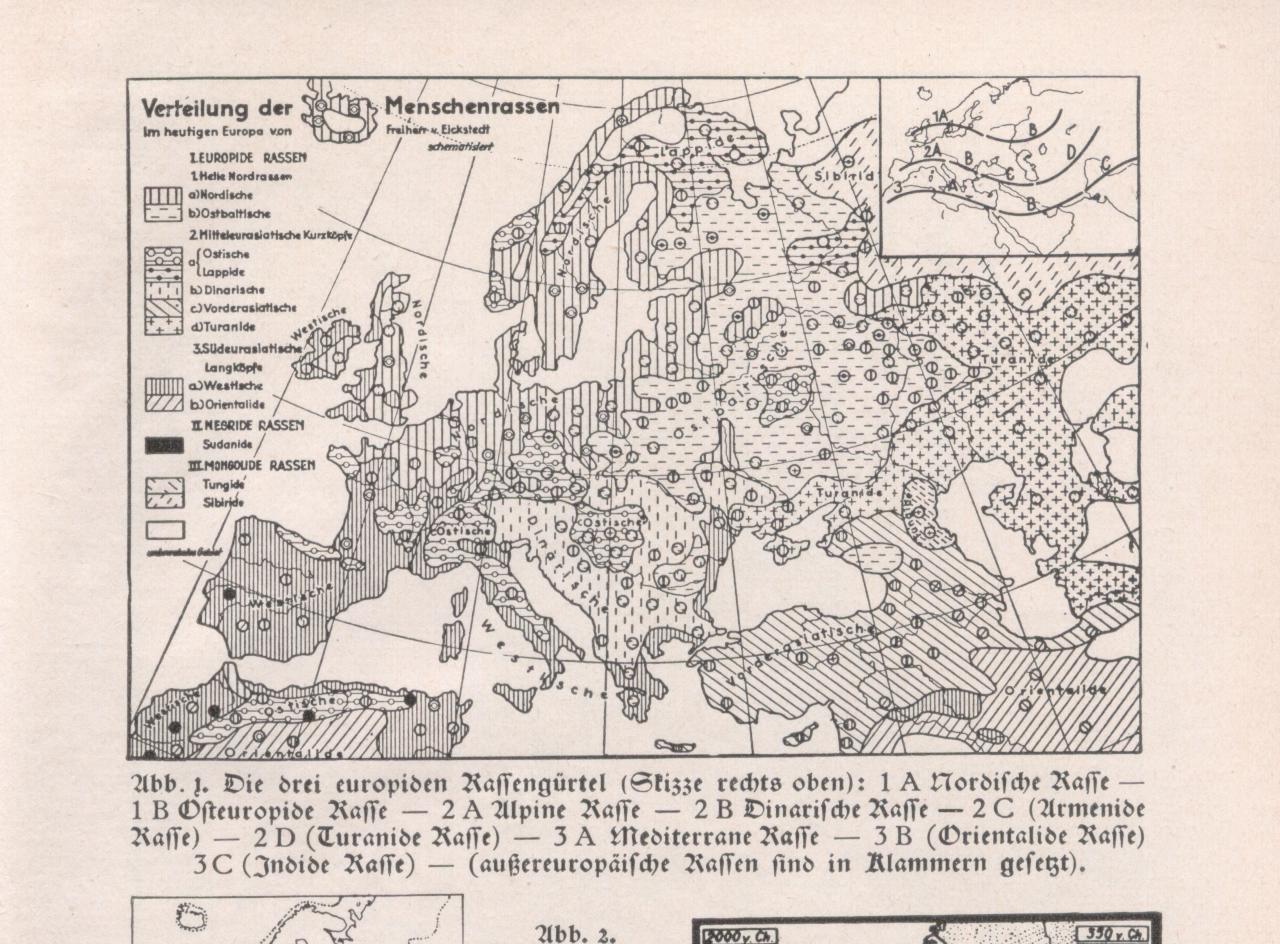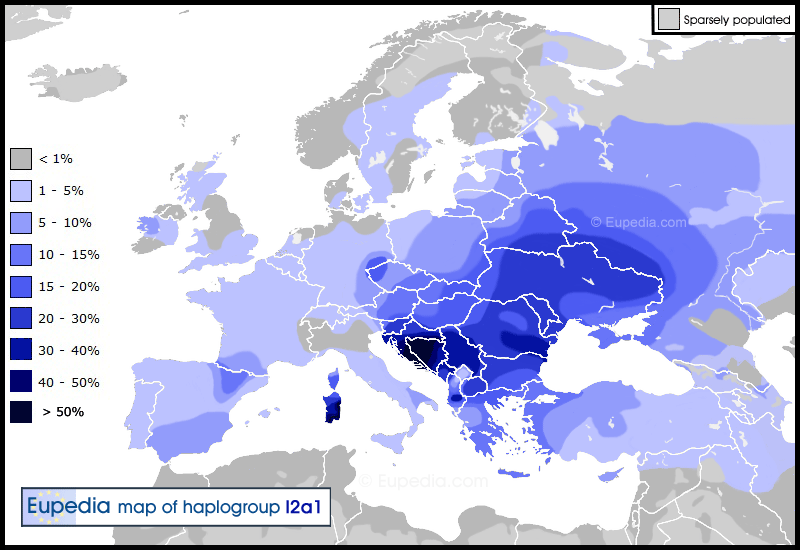Nobody1
Regular Member
- Messages
- 1,033
- Reaction score
- 261
- Points
- 0
at Zanipolo
It seems that there is not only an Anthropological diff. Between North and South Italy, but also within the North itself. - between North West [Lombardy/Liguria/Piedmont] and North East [Veneto/Friul].
This is Strictly Anthropologically Sub-Races of the Caucasoid race [Alpine-Nordic-Mediterranean-Armenoid].
Eugène Pittard - Race and History: An Ethnological Introduction to History (1926)
~ ITALY ~ - p.148
(1) The Adriatic or Dinaric race, tall, brachycephalic and brunet, inhabited the northeast.
---
(2) The Western or Cevenole race, brunet, brachycephalic and small, installed itself to the west of the Dinaric people. But these representatives of Homo alpinus do not seem to constitute such a homogeneous bloc as their neighbours to the east.
---
(3) The Ibero-Insular race — the Homo meridionalis of certain authors — is distributed in the south of Italy; This ethnic type — small, dark-haired, dolichocephalic — also peoples the Italian islands [Sardinia/Sicily]
---
To these three main races we must add that interesting but, as regards its origin, enigmatic group of the Ligurian Apennines and the littoral of the Riviera di Levante characterized by tall stature and dolichocephaly. Ought we to connect it, zoologically, with the Atlanto-Mediterranean race of Deniker — which, with breaks, inhabits the country extending from the French coast almost to the mouth of the Tiber ? Have we here survivals of a Nordic type ? Or should we rather credit, historically, the idea that they are a remnant of the Germanic bands of Radegast rather than that they constitute a residue of hypothetical Lydians ?
---
Something all other Anthropologists [Eickstedt/Banse/Lundman/Deniker/Czekanowski etc] confirm, that NE Italy is more Dinaric and NW Italy more Alpinoid (Mediterranid/Atlanto-Mediterranid)
von Eickstedt -

Atlanto-Medit. from Piedmont NW Italy - [Carleton S. Coon - Plates]

Borreby [Nordid/Alpine] from Lombardy N Italy - [Carleton S. Coon - Plates]

Noric type from Vicenza (Venetia) NE Italy - [Ridolfo Livi - Plates]

Also, acc. to Ridolfo Livi the NE of Italy is the region with the highest frequency of Blond hair {higher than Lombardy or Piedmont] and together with Lombardy the highest frequency of Light eyes (Blue/Grey) in Italy.
Something [exact frequencies] also Beals & Hoijer confirm.
Dr. Ridolfo Livi - Antropometria Militare

Dr. Gustav Kraitschek - Zeitschrift für Schul-Geographie: Vol XXIII-XXIV (1902)
Der Einfluss der nordischen Rasse in Oberitalien ist nicht überall gleich stark ... unter den italienischen Arbeitern, die bei uns als Erdarbeiter, Straßenbauer usw thätig sind, sieht man zuweilen mächtige, blond- oder rothbärtige Männer mit "germanischem" Profile, die wohl meist aus den nördlichen Theilen der Poebene stammen.
Translation -
The influence of the Nordic race in northern Italy is not equally strong ... among Italian workers who are active with us (Austria-Hungary) as navvies, road builders, etc, you see sometimes powerful, blond or red-bearded men with "Germanic" profiles, which were probably mostly from the northern parts of the Po Valley.
Anthropologically the NE Italians (Venetians/Friulians) are more Noric/Dinaric than NW Italians (Lombards/Piedmontese/Ligurians) who are more Alpinoid/Mediterranid.The Adriatic Veneti must have been of a diff. Caucasoid sub-race than the Umbrians/Insubres (Isombri). Also Genetically, NE Italians have the highest (far more than NW Italy) R1a frequency in Italy.
It seems that there is not only an Anthropological diff. Between North and South Italy, but also within the North itself. - between North West [Lombardy/Liguria/Piedmont] and North East [Veneto/Friul].
This is Strictly Anthropologically Sub-Races of the Caucasoid race [Alpine-Nordic-Mediterranean-Armenoid].
Eugène Pittard - Race and History: An Ethnological Introduction to History (1926)
~ ITALY ~ - p.148
(1) The Adriatic or Dinaric race, tall, brachycephalic and brunet, inhabited the northeast.
---
(2) The Western or Cevenole race, brunet, brachycephalic and small, installed itself to the west of the Dinaric people. But these representatives of Homo alpinus do not seem to constitute such a homogeneous bloc as their neighbours to the east.
---
(3) The Ibero-Insular race — the Homo meridionalis of certain authors — is distributed in the south of Italy; This ethnic type — small, dark-haired, dolichocephalic — also peoples the Italian islands [Sardinia/Sicily]
---
To these three main races we must add that interesting but, as regards its origin, enigmatic group of the Ligurian Apennines and the littoral of the Riviera di Levante characterized by tall stature and dolichocephaly. Ought we to connect it, zoologically, with the Atlanto-Mediterranean race of Deniker — which, with breaks, inhabits the country extending from the French coast almost to the mouth of the Tiber ? Have we here survivals of a Nordic type ? Or should we rather credit, historically, the idea that they are a remnant of the Germanic bands of Radegast rather than that they constitute a residue of hypothetical Lydians ?
---
Something all other Anthropologists [Eickstedt/Banse/Lundman/Deniker/Czekanowski etc] confirm, that NE Italy is more Dinaric and NW Italy more Alpinoid (Mediterranid/Atlanto-Mediterranid)
von Eickstedt -

Atlanto-Medit. from Piedmont NW Italy - [Carleton S. Coon - Plates]

Borreby [Nordid/Alpine] from Lombardy N Italy - [Carleton S. Coon - Plates]

Noric type from Vicenza (Venetia) NE Italy - [Ridolfo Livi - Plates]

Also, acc. to Ridolfo Livi the NE of Italy is the region with the highest frequency of Blond hair {higher than Lombardy or Piedmont] and together with Lombardy the highest frequency of Light eyes (Blue/Grey) in Italy.
Something [exact frequencies] also Beals & Hoijer confirm.
Dr. Ridolfo Livi - Antropometria Militare

Dr. Gustav Kraitschek - Zeitschrift für Schul-Geographie: Vol XXIII-XXIV (1902)
Der Einfluss der nordischen Rasse in Oberitalien ist nicht überall gleich stark ... unter den italienischen Arbeitern, die bei uns als Erdarbeiter, Straßenbauer usw thätig sind, sieht man zuweilen mächtige, blond- oder rothbärtige Männer mit "germanischem" Profile, die wohl meist aus den nördlichen Theilen der Poebene stammen.
Translation -
The influence of the Nordic race in northern Italy is not equally strong ... among Italian workers who are active with us (Austria-Hungary) as navvies, road builders, etc, you see sometimes powerful, blond or red-bearded men with "Germanic" profiles, which were probably mostly from the northern parts of the Po Valley.
Anthropologically the NE Italians (Venetians/Friulians) are more Noric/Dinaric than NW Italians (Lombards/Piedmontese/Ligurians) who are more Alpinoid/Mediterranid.The Adriatic Veneti must have been of a diff. Caucasoid sub-race than the Umbrians/Insubres (Isombri). Also Genetically, NE Italians have the highest (far more than NW Italy) R1a frequency in Italy.
Last edited:



